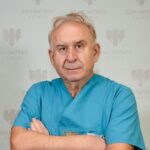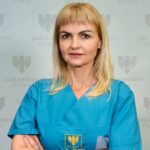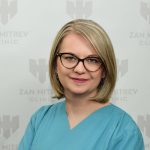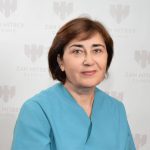 00389 2 3091 484
00389 2 3091 484
Medical Services
Pediatrics
Children come first! They make the world more beautiful!
Each child from 0 to 18 deserves the best healthcare by a pediatrics specialist. Starting from the birth until their adolescent age, the sensitive period of growth and development should be in the hands of the pediatric physicians.
Specialist pediatric examination of healthy and ill children
Specialist pediatric examination from the birth until 16 years of age (newborns, infants, preschool and school children). Timely diagnostics and treatment of upper and lower respiratory diseases, identification of the allergy type with allergology skin tests with inhalatory and nutritive allergens. Diagnosis and treatment of gastrointestinal diseases, urinary infections, anemias.
Intended for newborns and infants, encompasses monitoring of their growth and development, counseling, timely treatment of infections and other types of related problems, providing the parents with professional advice for care about their children as well as education and counseling for proper breastfeeding, proper nutrition of the mother and proper additional feeding of the newborn and infant.
Intended for children of preschool and school age up to 18 years of age with various pathologies and problems, but also healthy children, monitoring their body growth and development, early discovery of diseases or discrepancies in the psychomotor development.
Neurodevelopment examination
Necessary in newborn with neurorisk factors. That includes prematurely born children, children with low weight at birth, children with low Apgar, children born with complications during birth.
NEURODEVELOPMENT EXAMINATION is performed on all infants with:
- Sudden and uncoordinated hand, body, head movements.
- Difficulties with sucking and swallowing.
- Tremor – shaking of hands and legs.
- Long lasting crying which has not been caused by external sensations, high pitched, piercing or weak crying.
- Arching of the child.
- Excessively firm hard or languid infant
Neurodevelopment examination of children over 1 year
With or without neurorisk factors, but with signs of developmental disorders:
Behavioral disorder, speech development disorder, “clumsy” child, child that falls all the time.
- ADHD – hyperactivity and attention disorder
- Autism
- Cerebral paralysis
- Sleep disorders
Neurodevelopment examination of children with neurological diseases and conditions
- Febrile convulsions
- Epilepsy
- Headache
- Syncope, collapse/faint
- Other neurological conditions
Making working diagnosis and clinical assessment leads to more examinations and investigations (brain ultrasound in infant age, EEG of infant and child, biochemical and genetic investigations, computer assisted tomography or magnetic resonance etc.). If necessary, the child is referred to other specialists (ORL specialist, special education specialist, speech therapist, psychiatrist or physiatrist).
The treatment starts with the diagnosis, and it can be medication or other such as physical therapy, speech exercises, psychological treatments etc.
Preparation for EEG in children
EEG is a functional and noninvasive method which registers the activity in brain cells whose activity is expressed through a constant transmission of electric impulses, even during sleeping. This activity is shown in the EEG image as a wave line.
EEG is applied for many conditions such as headaches, dizziness, communication disorder, head injury, consciousness disorder, speech disorder, sleep disorder etc.
HOW IS EEG PERFORMED?
EEG in children is performed by putting a net shaped cap on the head which has electrodes which adhere to the head using gel
EEG is performed while seating or laying down with closed eyes. An older child is required to open and close their eyes suddenly during the EEG. The duration of the procedure when the patient is awake is 30 minutes and activation techniques, such as deep breathing and photo stimulation are performed during the EEG procedure.
Small children are usually subjected to EEG during natural sleep.
EEG after a sleepless night is especially useful. The child is prepared in a special way for such an EEG procedure.
PREPARATION OF THE CHILD FOR EEG
- The child goes to sleep in the usual time, it is woken up around midnight (older child) or around 4 a.m. (younger child). After waking up, it is important that the child does not fall asleep until the beginning of the EEG procedure, and to fall asleep during the procedure.
- In older children, 8 hours before EEG, sleeping medications, tranquilizers, coffee, tea, chocolate should not be taken. The prescribed medication are taken according to the prescribed scheme.
- A small meal is good to be taken before the procedure in order to avoid hunger.
Allergen specific immunotherapy
This procedure enables desensitization in children with verified sensitivity to pollens and allergens in the home environment.
Only our institution applies this therapy with preparation which are applied in a short period of time of 2-3 months.
Child gastroenterology
Gastroenterology is a pediatric branch which deals with diagnosis and therapy of digestive system diseases and nutrition disorder in children and adolescents.
The focus of the activity is treatment and monitoring of the digestive disorders such as gastroesophageal reflux, stomach pain, obstipation and nutrition problems in order to help the patients and their parents in dealing with the disease and improve the health and well-being of their child.
Conditions that are treated include:
- Stomach pain
- Obstipation
- Nutrition disorder/obesity/failure to advance in body weight
- Diarrhea of noninfective origin
- Encopresis
- Gastroesophageal reflux and reflux disease
- Food allergies and intolerance
- Hyperbilirubinemia/hepatitis
- Bowel inflammatory diseases
- Pancreatitis
- Ulcer disease
- Malabsorption/maldigestions
- Allergic colitis
- Celiac disease
Services
- Counseling for proper nutrition of the children
- Oral rehydration
- Abdominal ultrasound
- 256-slice MSCR of abdomen
- Laboratory diagnostics
- 24-hour pH metric for diagnosis of GER
- Genetic testing for celiac disease
- Nutrigenetics
Diagnostics and therapy
- Acute and recurrent abdominal pain
- Obstipation in children
- Gastroesophageal reflux
- Recurrent vomiting
- Food allergy
- Chronic diarrhea and malabsorption (for example, celiac disease)
- Nutrition disorders (poor advancing body weight/obesity)
- Acute and chronic liver diseases
- Intravenous/infusion therapy
- Intramuscular therapy
Nutrition advice
- Healthy children and older children
- Children with nutrition disorders (malnutrition/obesity)
- Children with food allergies
- Children with specific nutritional needs due to several chronic diseases/conditions
Pediatric cardiology
The congenital heart defects are problems with the heart structure which are present since birth. These defects include:
- Defects of the internal walls of the heart
- Defects of the heat valves
- Defects of the arteries and veins that carry blood to the heart and out of the heart, to the body
The congenital heart defects change the normal flow of the blood through the heart. This occurs due to insufficiently developed parts of the heart before birth.
Congenital defects do not cause chest pain or other painful symptoms. Severe defects cause signs and symptoms, most often in newborns and include:
- Rapid breathing
- Weak circulation
There are many types of congenital heart defects which can range from simple defect without symptoms to complex defects with severe life-threatening symptoms. Examples for congenital defects include:
- Atrial septal defect
- Ventricular septal defect
- Pulmonary valve stenosis
- Aortic coarctation
- Right ventricular hypertrophy
- Therapy of Fallot (combination of several defects)
Depending on the severity, complexity and type of the defect, it can be treated with catheterization procedure (interventional) or with open heart surgery. There are defects that require combination of both types of treatment due to the complexity of the defect.
- Open heart surgery in children with congenital heart defects is recommended in the cases when the defect cannot be treated with interventional procedure.
- Closing of the communication between the ventricles and atria with patch platy
- Reconstruction or replacement of heart valves
- Opening of the arteries or openings at the heart valves
Reconstruction of complex defects that include problems with blood vessels close to the heart (underdeveloped or positioned on the wrong location).
Implanting pacemakers and cardioverter defibrillators (ICDs) are used in the optimal treatment of children with congenital heart defects characterized by changes in the heart rhythm. The pacemaker serves to regulate the abnormal heart rhythm while the defibrillators serve to correct the life-threatening rhythm disorders.
Services
- Examination by a pediatric cardiologist
- ECG
- Doppler echocardiography
- Ergometry (heart stress test)
- 24-hour blood pressure Holter
- 24-hour ECG Holter
- Interventions for congenital heart defects
- Surgeries on children with congenital heart defects
Pulmonology and allergology
Pulmonology and allergology is a pediatric branch dealing with identification, investigation and therapy of allergies, asthma and lung diseases in children from birth up to 18 years of age. It includes:
- Asthma
- Acute and chronic diseases of the respiratory system
Food allergy and inhalation allergens allergy (domestic dust, pollen, pets fur etc.)
Pollen fever (allergic rhinitis and conjunctivitis)
Obstructive sleep apnea
Sinusitis
Skin rashes (eczema, urticaria)
Insect stings allergy
Services
- Examination by a pulmonologist
- Allergy skin tests with inhalatory and nutritive allergies
- Spirometry (examination of the lung function)
- Bronchodilator test (“Ventolin” test)
- Lung X-ray
- 256-slice chest MSCT
- Feno analysis
Treatment
- Intravenous therapy
- Intravenous/infusion therapy
- Intramuscular therapy
- Counseling of children with asthma
Allergy skin test with inhalatory and nutritive allergens, for example, allergens in the air (dog hair, dust, domestic dust, pollen, animal dandruff, mold etc.) as well as doe allergens in the food (milk, egg yolk, egg white, wheat flour, fish, soy etc.). The method is through scratching of the skin (skin prick test), dropping allergens and the result is ready in 15 minutes.
Provocation bronchodilatation test (“Ventolin” test) is a method which assesses the airflow through the airways before and after the use of Ventolin. Diagnostic positive test suggests asthma.
We can perform all the necessary laboratory analyses of blood and urine. If it necessary we can administer inhalatory, intravenous and intramuscular therapy.
Counseling of children with asthma
Asthma is an inflammatory disease of the airways and one of the leading chronic diseases in children with significant progress globally and in our country. In the pediatric sector, asthma is a problem that bothers the children and their parents. In addition to examination and therapy, we offer counselling of the parents and children in order to manage the disease more successfully.
Other doctor’s from this department

Prof. Aco Kostovski MD, PhD
Pediatrics specialist Pediatrics gastroenterohepatology subspecialist
aco.kostovski@zmc.mk




